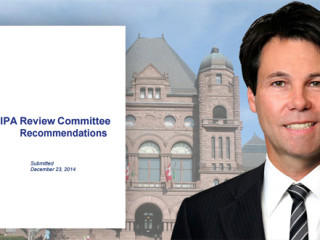The Divisional Court provides an analysis on the law on spoliation and the relevance of medical records more than 5 years pre-accident.
Released May 30, 2016 | Full Decision [CanLII]
The Plaintiff appealed from a judgment dated March 13, 2014 following a jury trial which found no liability on part of the TTC. The Plaintiff was a passenger on a TTC Bus on August 20, 2010. She alleged that before she was able to sit down, the bus accelerated and she fell resulting in injuries to her right shoulder, back and right knee. A police officer attended the scene and after interviewing some witnesses, he concluded that he did not think the Plaintiff had fallen so he did not file a report. He did, however, relay the information to a TTC supervisor. The TTC was put on notice on October 6, 2010.
The Plaintiff appealed the trial judge’s rulings regarding the spoliation of video evidence and the production of extensive clinical notes and records. The Divisional Court provided a detailed analysis which will not be repeated here, but I encourage everyone to read the decision.
The video footage from the cameras installed on the TTC bus in question was not preserved. The Plaintiff sought an order that an adverse inference be drawn against the TTC for failing to preserve the video. The trial judge concluded that the Plaintiff had not established the requisite intent necessary to support a claim of spoliation of evidence. The Divisional Court confirmed that the trial judge correctly set out the law on spoliation in his reasons, which can be summarized as follows: “Spoliation in law, however, does not occur merely because evidence has been destroyed. Rather, it occurs where a party has intentionally destroyed evidence relevant to ongoing or contemplated litigation in circumstances where a reasonable inference can be drawn that the evidence was destroyed to affect the litigation.” The Divisional Court concluded that given the evidence presented, the trial judge did not make any palpable and overriding errors in dealing with the spoliation issue.
Prior to trial, the Plaintiff produced to the TTC clinical notes of her family doctor, Dr. Rose, for five years pre-accident and forward. The Plaintiff had testified that she had no problems with her shoulder before the accident. During examination-in-chief, Dr. Rose testified that he was unaware of any pre-existing injuries. During cross-examination, counsel for the TTC asked for an opportunity to review all of Dr. Rose’s clinical notes that he brought, which dated back to 1972. The Plaintiff objected. The trial judge adjourned to allow counsel an opportunity to review the records and make submissions on the extent of disclosure. The notes revealed that the Plaintiff had problems with her right shoulder, knee, and back areas before the TTC accident. The trial judge allowed defence to cross-examine Dr. Rose on all of the records.
The Divisional Court held that the trial judge did not err by allowing production of all clinical notes and by allowing counsel to examine the clinical notes and make submissions before he ruled on admissibility. The Divisional Court further stated that it would have been a palpable and overriding error if the trial judge had ruled on admissibility of the notes without reviewing them first. This was not a Brown v. Dunn situation since Dr. Rose was the Plaintiff’s witness; she had control over the use of her records and had the opportunity to review the entire file. The Divisional Court ultimately concluded that the pre-existing notes were relevant; the appellant had denied any prior problems and the records suggest otherwise. The Divisional Court also rejected this ground of appeal.
Read the full decision on CanLII













